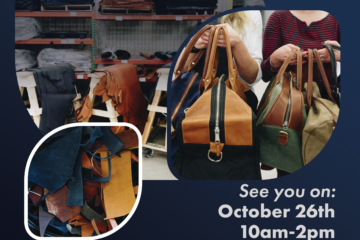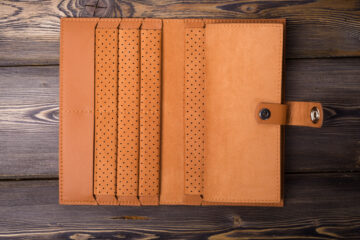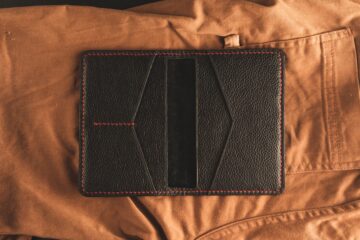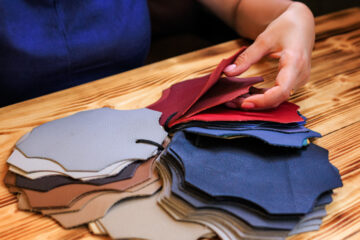Maximizing Efficiency in Small Leather Goods Production: Tips for Success
The leather goods industry is valued at $242.85 billion and is expected to grow by 6.6% annually until 2030. Leather goods, including small leather goods, play a significant role in the US economy, so efficient manufacturing processes are essential to meet demand. Let’s examine different strategies for maximizing efficiency in small leather goods production, including simplifying the design process, incorporating lean manufacturing principles, and streamlining the supply chain.
Streamlining Design and Material Selection
Efficiency in small leather goods production means looking for ways to create high-quality goods while reducing waste and maximizing resources. This begins with the initial stages of design and material selection. Making smart decisions at this stage can significantly impact the ease and speed of production. Prioritizing simplicity in design is an excellent way to reduce time waste. Simple designs can be cut and formed quickly and are often modular, meaning that the pieces can be formed in several ways to create different product types. Additionally, creating prototypes can identify potential production challenges without wasting tons of materials. The design can then be adjusted to solve problems before heading into the final stages of production.
Raw material waste is one of the primary detractors to achieving efficiency in the production process. Choosing the right leather can also reduce waste and streamline the production process. Different types of leather have different thicknesses and pliability, so it is important to keep these characteristics in mind when designing a product. By focusing on simplicity in design and carefully selecting materials, you set a strong foundation for an efficient small leather goods production process.
Lean Manufacturing Principles for Workflow Optimization
Lean manufacturing principles are pivotal in improving efficiency in small leather goods production. These principles emphasize the elimination of waste, continuous improvement, and streamlined workflows. The manufacturing location should be clean and clutter-free to reduce time wasted sorting extraneous materials. Additionally, all necessary tools and materials should be easily accessible. Developing standardized procedures for the manufacturing process can help reduce time wasted and errors made in the production process. When applied effectively, these principles can result in improved productivity, reduced costs, and increased customer satisfaction.
Technology Integration in Production Processes
Integrating technology into small leather goods production can significantly enhance efficiency, accuracy, and overall productivity. Computer-aided design software can help create digital prototypes to identify design issues without creating the product. This automates part of the design process and can speed up design times, sending products into production faster. Additionally, computerized cutting and stitching machines can consistently produce identical parts, reducing the likelihood of defects. Finally, implementing real-time just-in-time inventory tracking can help identify when materials need to be restocked without overstocking.
Quality Control
Quality control is central to maximizing efficiency in small leather goods production. This involves routinely monitoring products for defects and looking for bottlenecks in the production process. Quality control can identify issues in the production process early to reduce customer complaints and wasted materials.
Streamline Supply Chain
Streamlining the supply chain is essential to optimizing the production process. Efficient supply chains minimize operational costs by reducing waste, excess inventory, and unnecessary transportation or handling. Additionally, a streamlined process enables faster production and shipping times, ultimately leading to a competitive advantage. To streamline the production of small leather goods, it is important to maintain good relationships with suppliers and have clear, open lines of communication.
Hire a Skilled Workforce
The leather industry is constantly evolving with new technologies and trends. To keep up, it is essential to invest in a skilled workforce. This will help improve product quality, lead times, and productivity. Skilled workers know the ins and outs of leather goods production, so they can help create high-quality products without wasting time and money. It is important to remember that employee motivation plays a huge role in developing high-quality small leather goods, so offering goods benefits and pay to increase employee morale and reduce turnover.
The path to success in the small leather goods industry is paved by efficiency. From the careful selection of materials to the skillful hands of a trained workforce and the seamless integration of cutting-edge technology, every aspect plays a vital role in achieving maximum productivity and quality. Adopting the strategies outlined in this article allows businesses to transform their operations into lean, agile, and customer-centric endeavors.
Ready to Elevate Your Small Leather Goods Production? Partner with Softline Brand Partners!
At Softline Brand Partners, we are more than just a manufacturing company; we are your trusted partner in producing exceptional small leather goods. With a rich history in soft goods manufacturing and a commitment to excellence, we’re here to help you achieve unmatched efficiency and quality in your production processes. Contact us today to learn how we can help you create quality leather goods!











